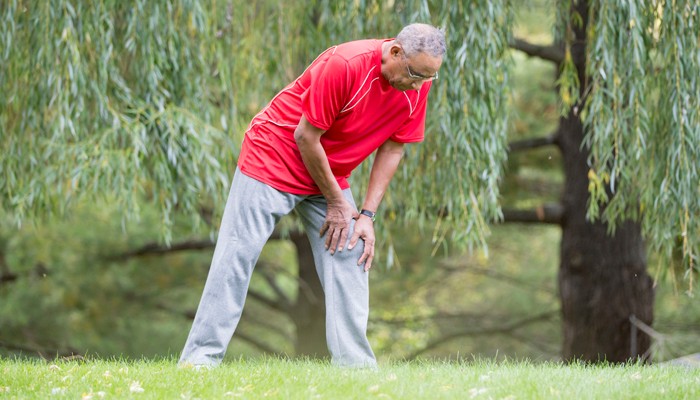Surprising Remedy for Aching Knees
Try these low-impact exercises that may help ease knee pain.

Do you avoid exercise because your knees ache from osteoarthritis or excess weight? You are not alone. Pain and lack of flexibility keep many people with aching knees from exercising and being more active.
How can you help your aching knees hurt less and allow you to move more? One method that may bring relief may surprise you: Exercise.
Why your knees ache
The bones in our joints are covered with tough but slippery cartilage. The cartilage is a shock absorber. It allows the bones to glide against each other. As we age, the cartilage often wears away and the bones may rub or bump against each other without cushioning.
Knees are among the most common joints affected by osteoarthritis. The result can be pain, swelling and stiffness. Joint pain can also be caused by an injury or by being overweight.
Exercise helps
Exercising a painful knee may seem like bad advice — but not always. Exercise can improve your strength and flexibility. This may lessen your pain and improve your mobility. The key is to start slowly. Don’t overdo it, and never ignore pain. Be sure to talk to your doctor before you get started. Some people with severe symptoms may be advised by their doctor to hold off on exercise until their symptoms stabilize.
Mixing it up
It is important to learn what exercises and activities are right for you. Fitness centers often provide options and routines for those who must avoid weight-bearing exercise. Going to a fitness center is not required, however. Many exercises that help aching knees can be done at home.
Your exercise goals may include increasing your range of motion, reducing pain and strengthening your muscles. You and your sore knees may benefit from a mix of exercises. These exercises include:
- Strengthening exercises. The stronger the muscles that support the knee, like the quadriceps, the less stress on the knee itself. Strengthening exercises can include leg lifts and hamstring curls. These could be done 2 or 3 times per week depending on your symptoms.
- Range-of-motion activities. These improve flexibility and may include hamstring and quadricep stretches.
- Aerobic activities. Stick to light or low-impact exercises, such as walking or swimming. Try exercising in water or biking. The exact nature and frequency of these exercises should be tailored to your overall health — ask your doctor for suggestions.
Make sure you get guidance from a fitness or physical therapy professional. You want to do the right exercises correctly, with the greatest benefit and least chance of pain or injury. Talk with your doctor if you experience soreness or swelling. Ask if you should use ice after exercising or take medication for pain relief, such as an over-the-counter anti-inflammatory.
A word about weight
Being overweight puts increased stress on the knees. This can limit movement and cause injury. If you are overweight, adding healthy eating habits and weight loss to your exercise routine may also help reduce knee pain.
Note: If you are physically inactive or you have a health condition such as arthritis, diabetes, heart disease, pregnancy or other symptoms, check with your doctor before starting an exercise program or increasing your activity level. He or she can tell you what types and amounts of activities are safe and suitable for you.
By Kristin Nelson, Contributing Writer
Sources
National Institute of Arthritis and Musculoskeletal and Skin Diseases. Arthritis. Accessed November 6, 2020.
Centers for Disease Control and Prevention. Arthritis. Physical activity for arthritis. Accessed November 6, 2020.
American Academy of Orthopaedic Surgeons. Knee exercises. Accessed November 6, 2020.
The American Council on Exercise. Fit facts. Exercise and arthritis. Accessed November 6, 2020.
Last Updated November 16, 2020
